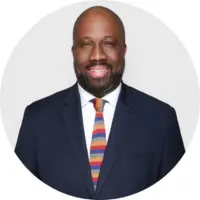
On Dec. 31, my family and I rang in the new year watching movies, eating pizza, playing board games and talking. Yet something about the arrival of 2024, and all that faces Black America in the year ahead, was sobering.
From growing white extremism and backsliding on democracy to the demolition of affirmative action and destruction of Black history in schools, our community stands at a crossroads in our collective journey toward the American dream.
Without a doubt, 2024 presents a number of opportunities to reflect on the state of our kids and families — including the 70th anniversary of the Supreme Court’s Brown v. Board of Education ruling and 10 years since a white police officer shot and killed Michael Brown in Ferguson, Missouri.
The impacts of systemic and individual racism on the Black community are devastating. Yet while we work to disrupt the status quo, we cannot minimize nor neglect creating spaces that foster listening, healing and new narratives for how we relate in our communities.
Since 2017, the W.K. Kellogg Foundation has sponsored the annual National Day of Racial Healing, a time to contemplate our shared values as Americans and create a blueprint on how Black people can heal from the effects of racism.
This year, we shared new tools and platforms where participants can share stories with new allies, take advantage of new initiatives and work with institutions, corporations and legislators renewing their commitment to advance racial equity.
Despite setback after setback, Black Americans maintain an enduring vision of possibility for racial healing in this country, yet they also yet carry lingering skepticism that meaningful, lasting social change will ever occur. Therefore, authentic racial healing must be rooted in justice, restitution and even reparations.
If American society is a landscape interconnected by bridges, the one representing the historical journey of Black Americans is near collapse. Anchored in slavery, systemic racism and economic disparity, the supports are weak and in constant disrepair.
Racial healing, then, must be a collective, determined effort to repair and upgrade this bridge by engaging individual hearts and minds, breaking down systemic racism — one person at a time. It means demanding justice, restitution and acknowledgment of harm, and calling for the allocation of resources to ensure safety and equality for all.
This repaired bridge to Black America must become a symbol of unity and equal access.
The support, nurture, protection, and affirmation of Black children is fundamental for a strong, healthy sustainable Black community. To ensure this, we must not only address historical injustices but make investments for future generations.
As such, this repaired bridge to Black America must become a symbol of unity and equal access. It must be a pathway where the weight of the past no longer hinders progress, and where Black children — in every community across this country — has an unhindered path toward “life, liberty and the pursuit of happiness.”
To power this work, we must leverage philanthropic, corporate, and individual investments and harness the brilliance and creative power of Black communities. We must imagine a new level of Black joy, excellence, health, possibility, and holistic prosperity. And we must remember that achieving this goal will be a source of pride — and a tribute to our ancestors who, through pain, labored to build this country and believed in its promise.

As Cornel West one said, “Never forget that justice is what love looks like in public.”
Ashanti Bryant is a senior program officer at the W.K. Kellogg Foundation.















